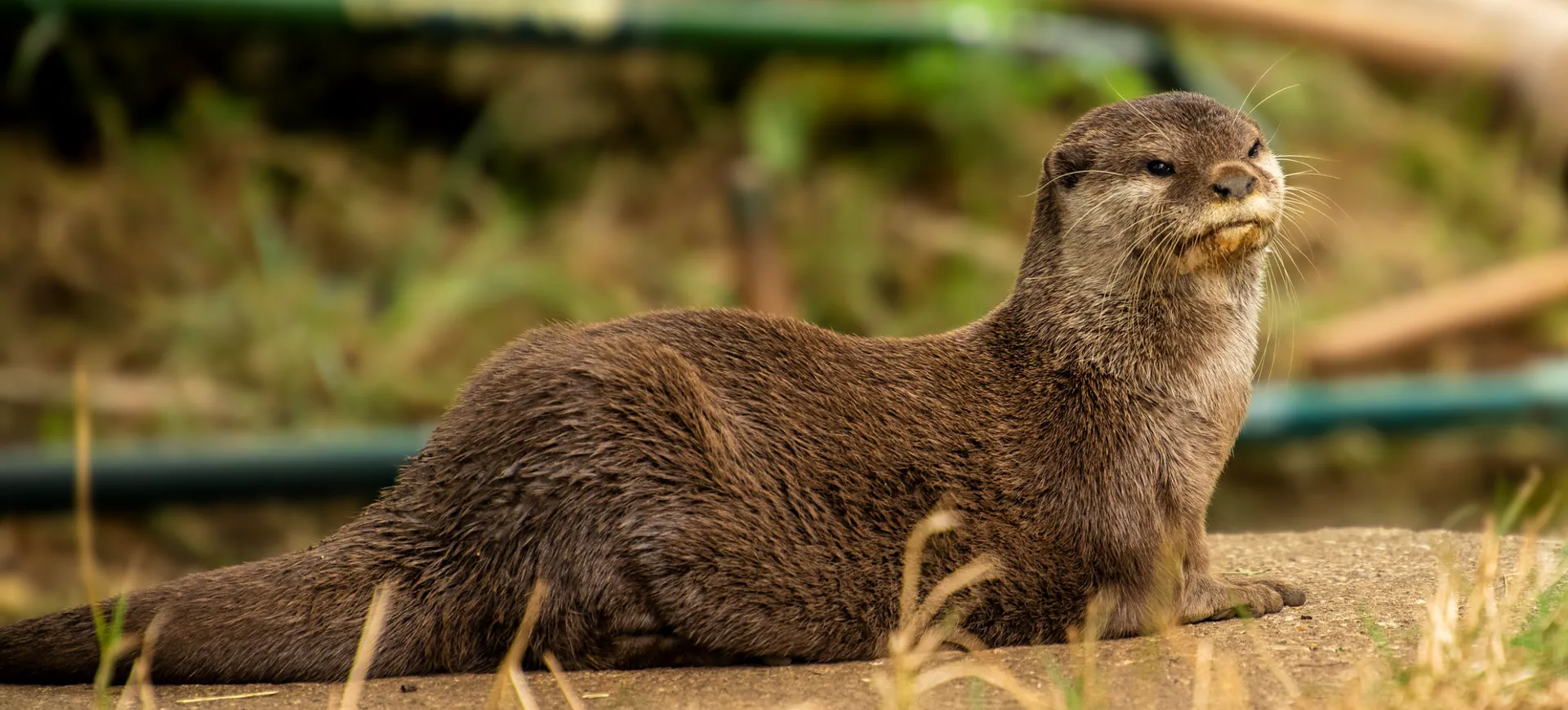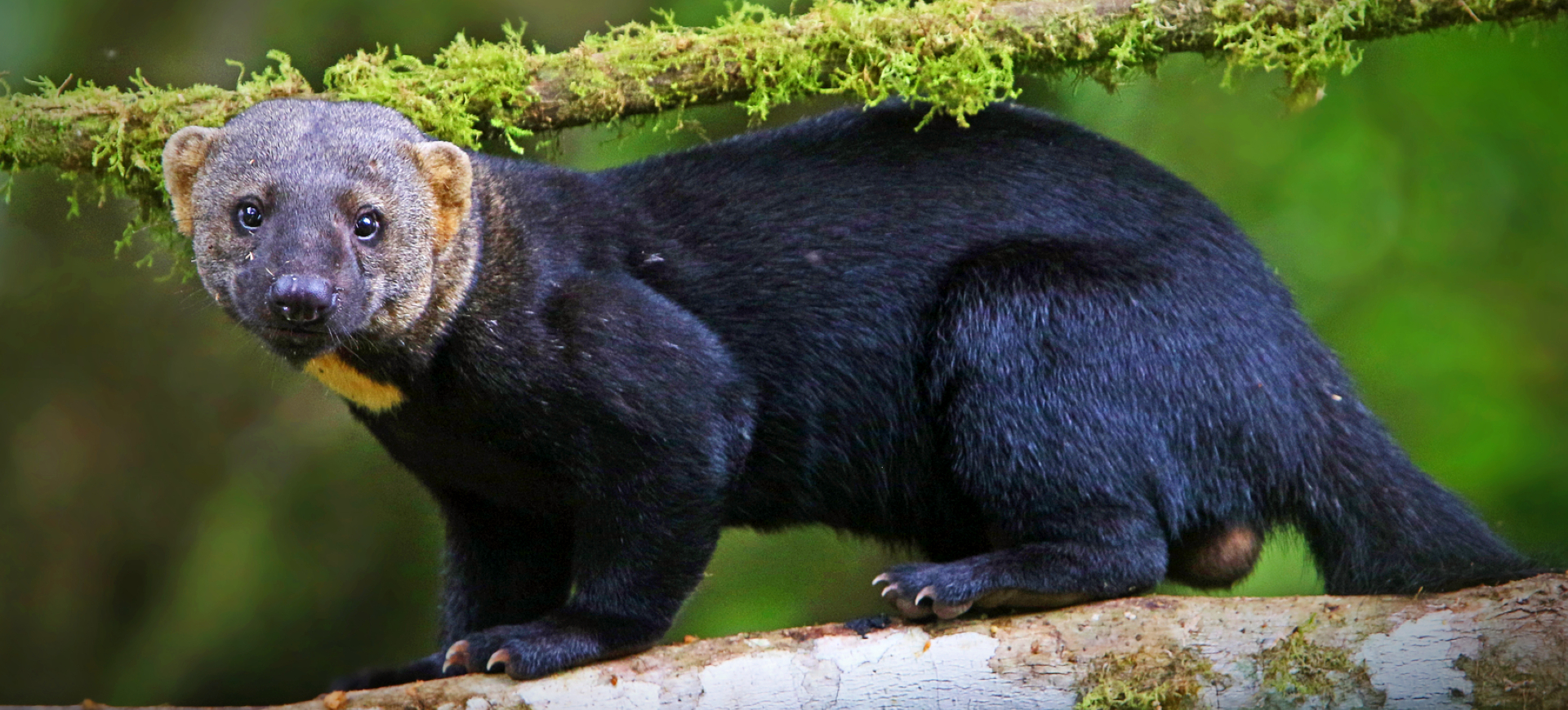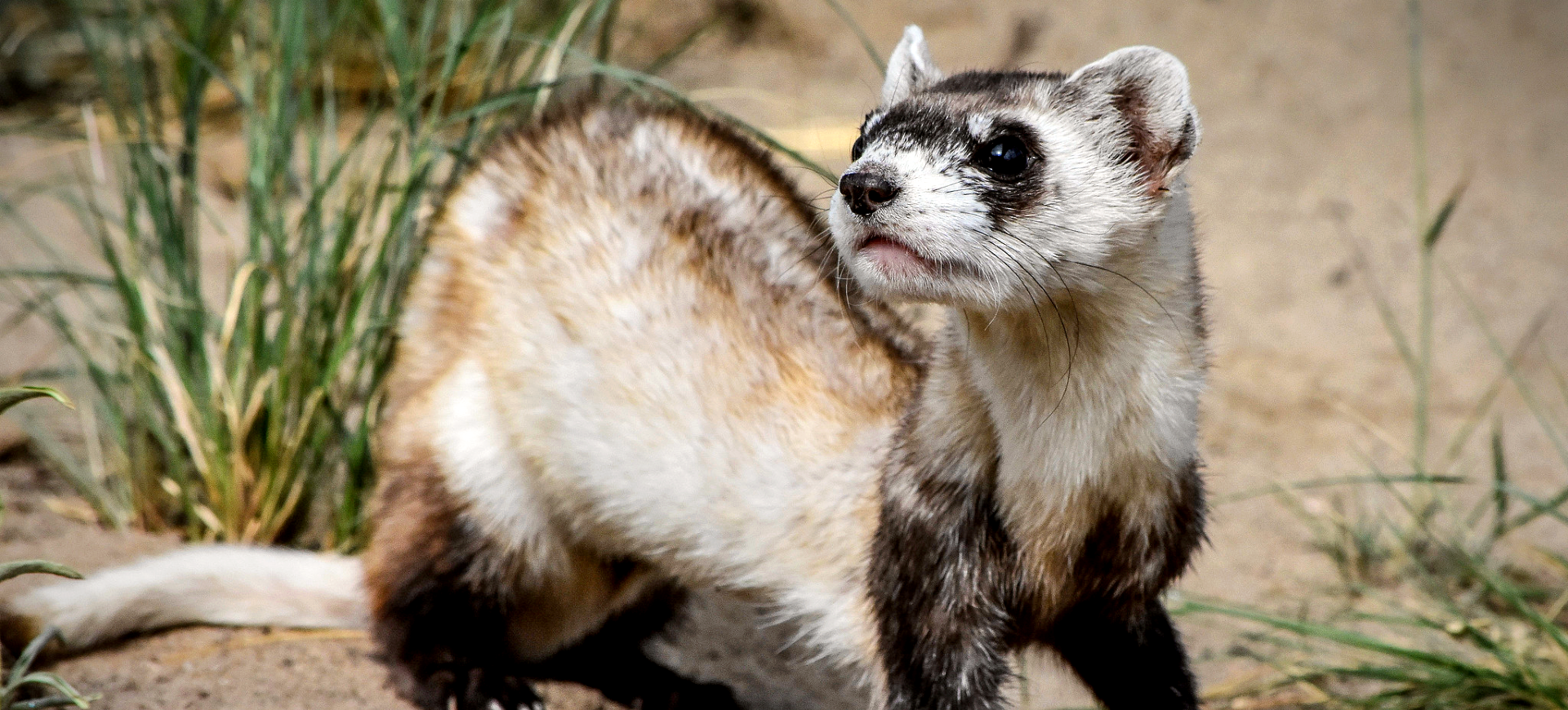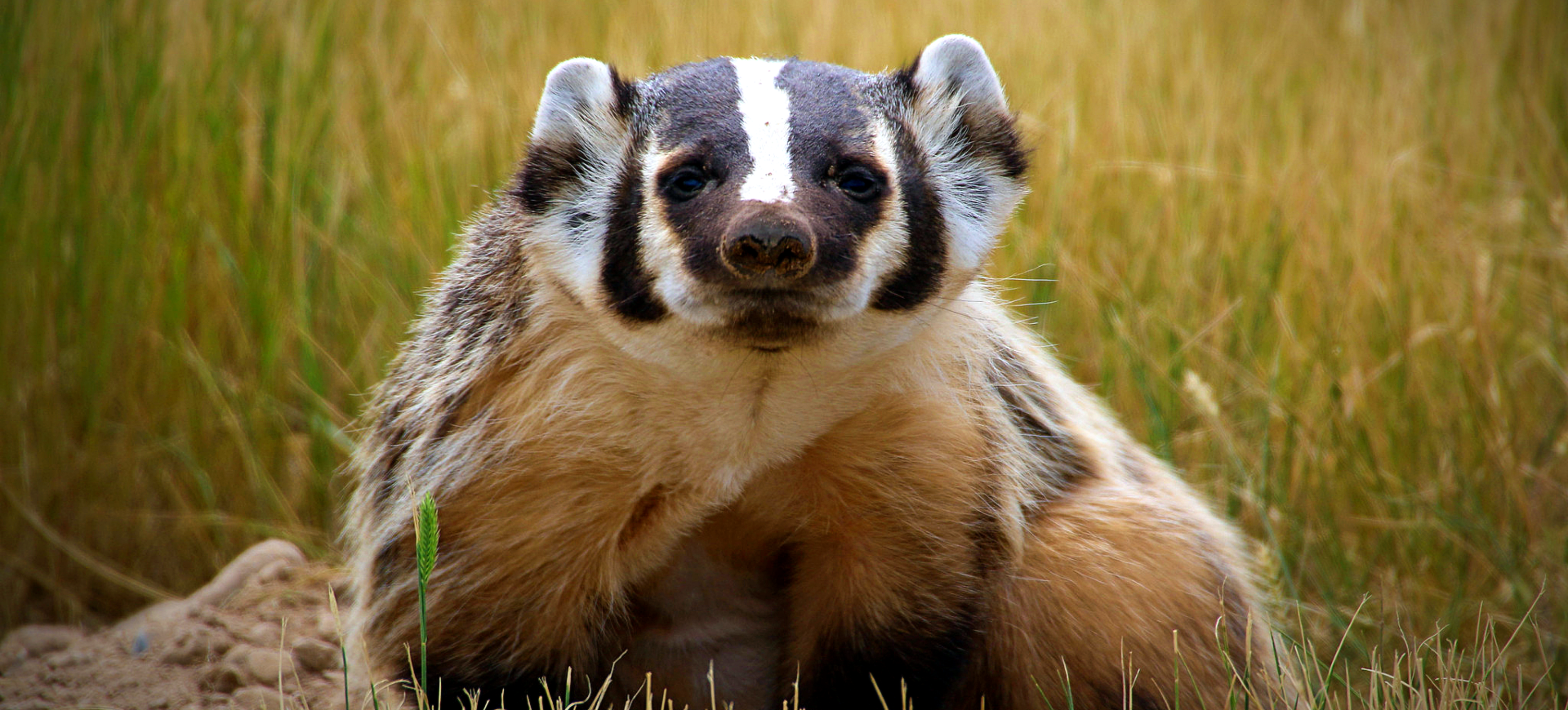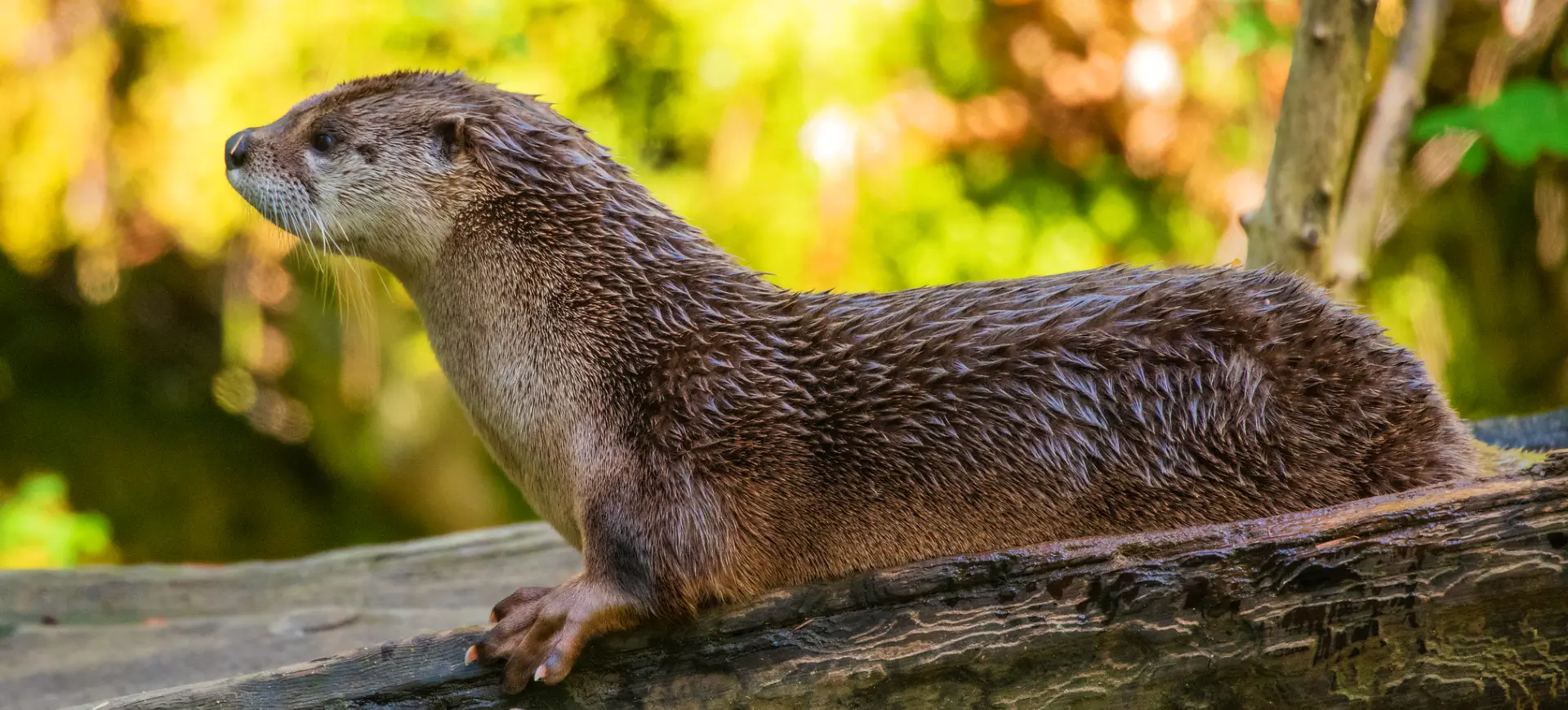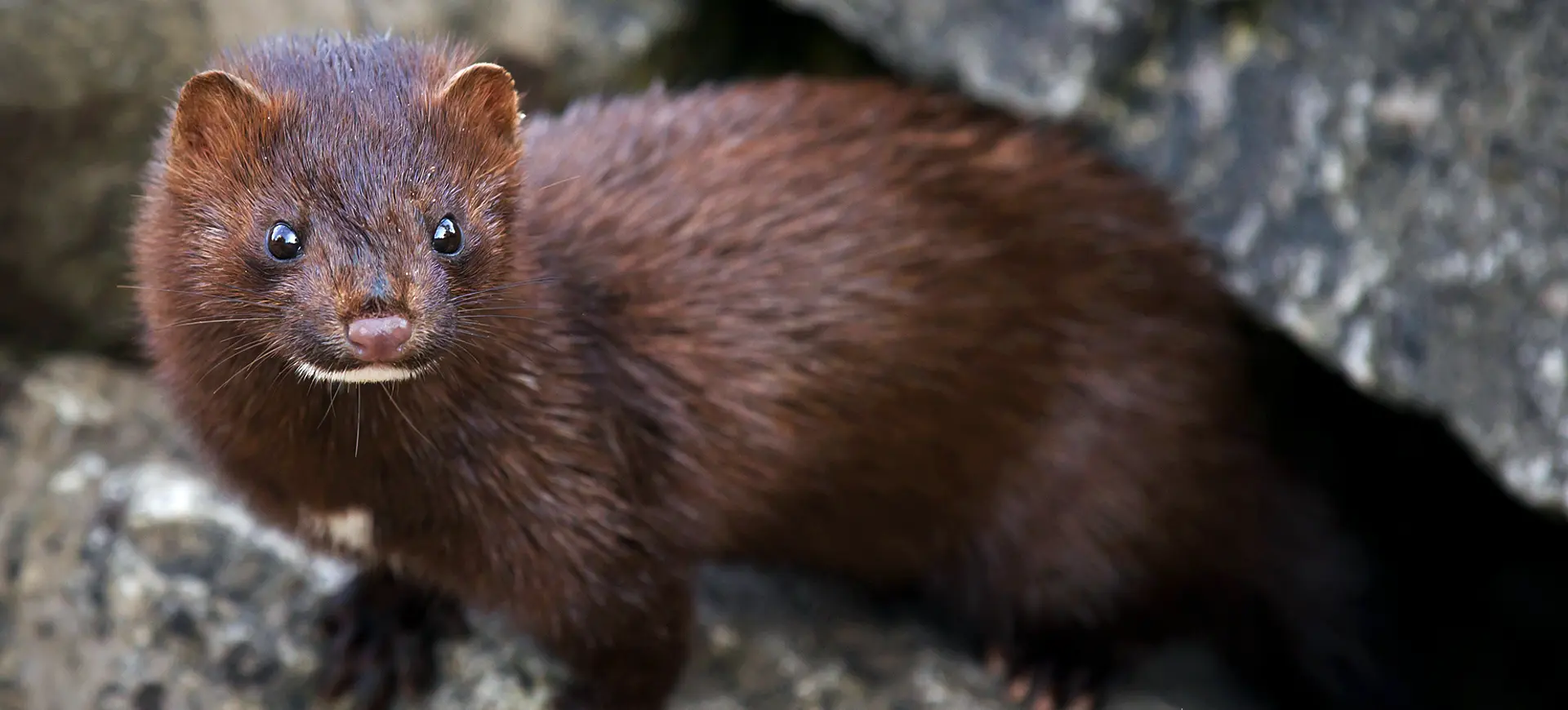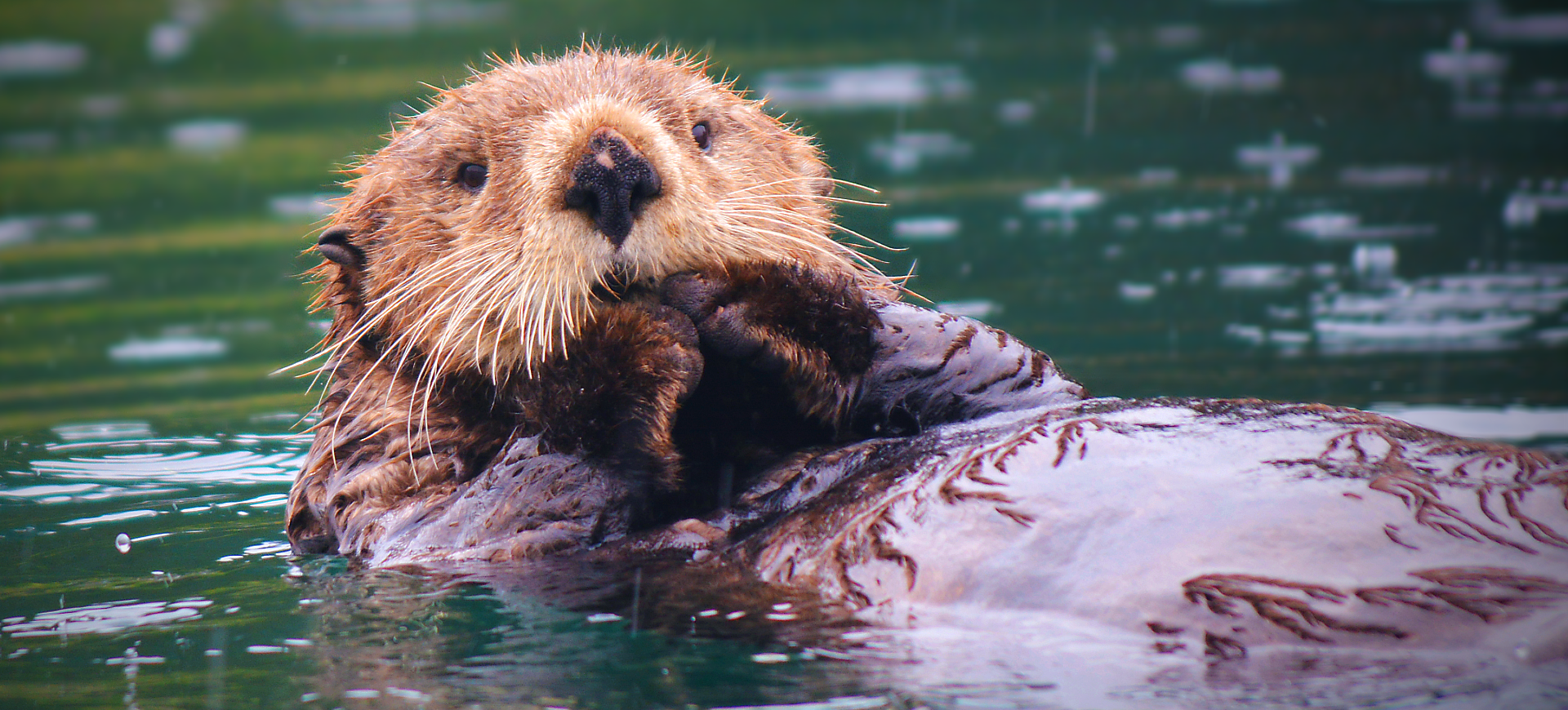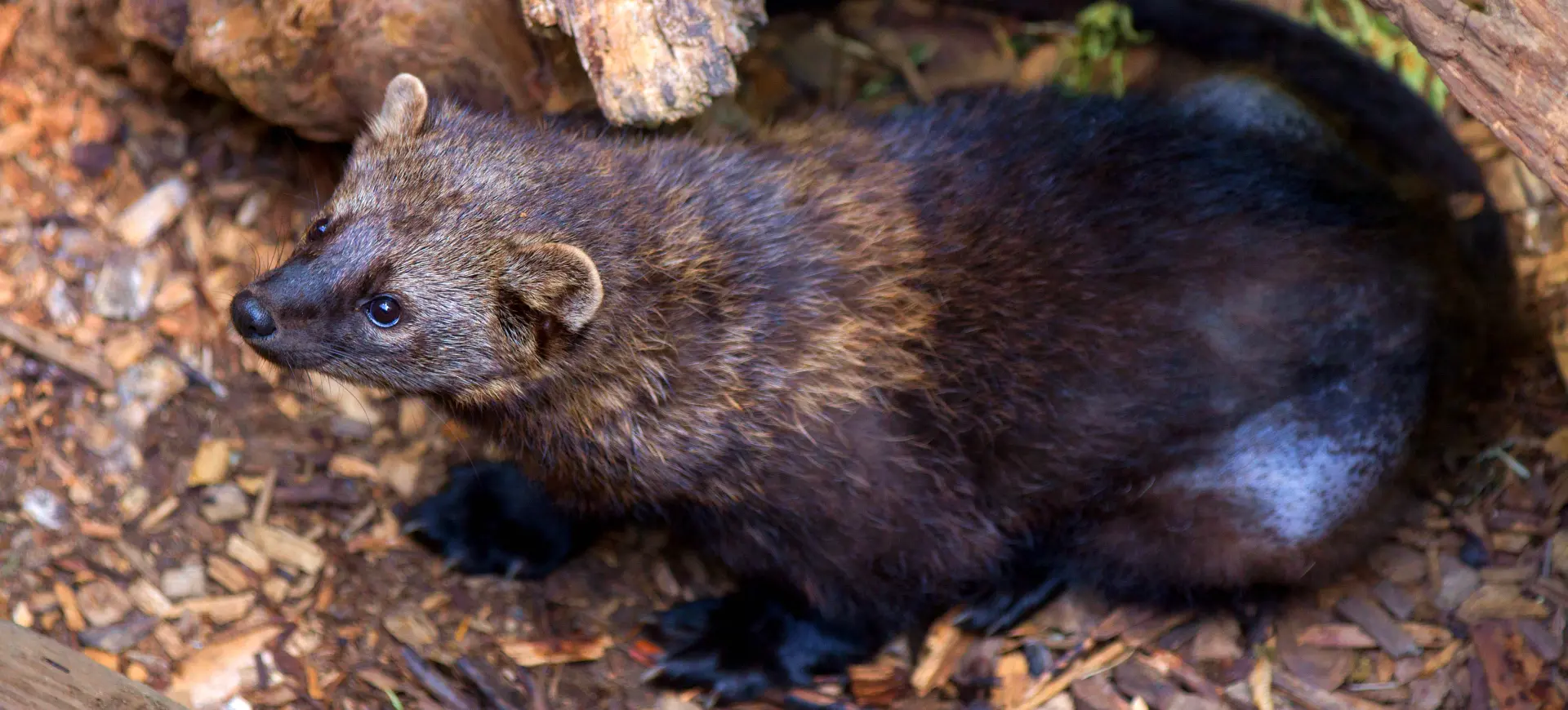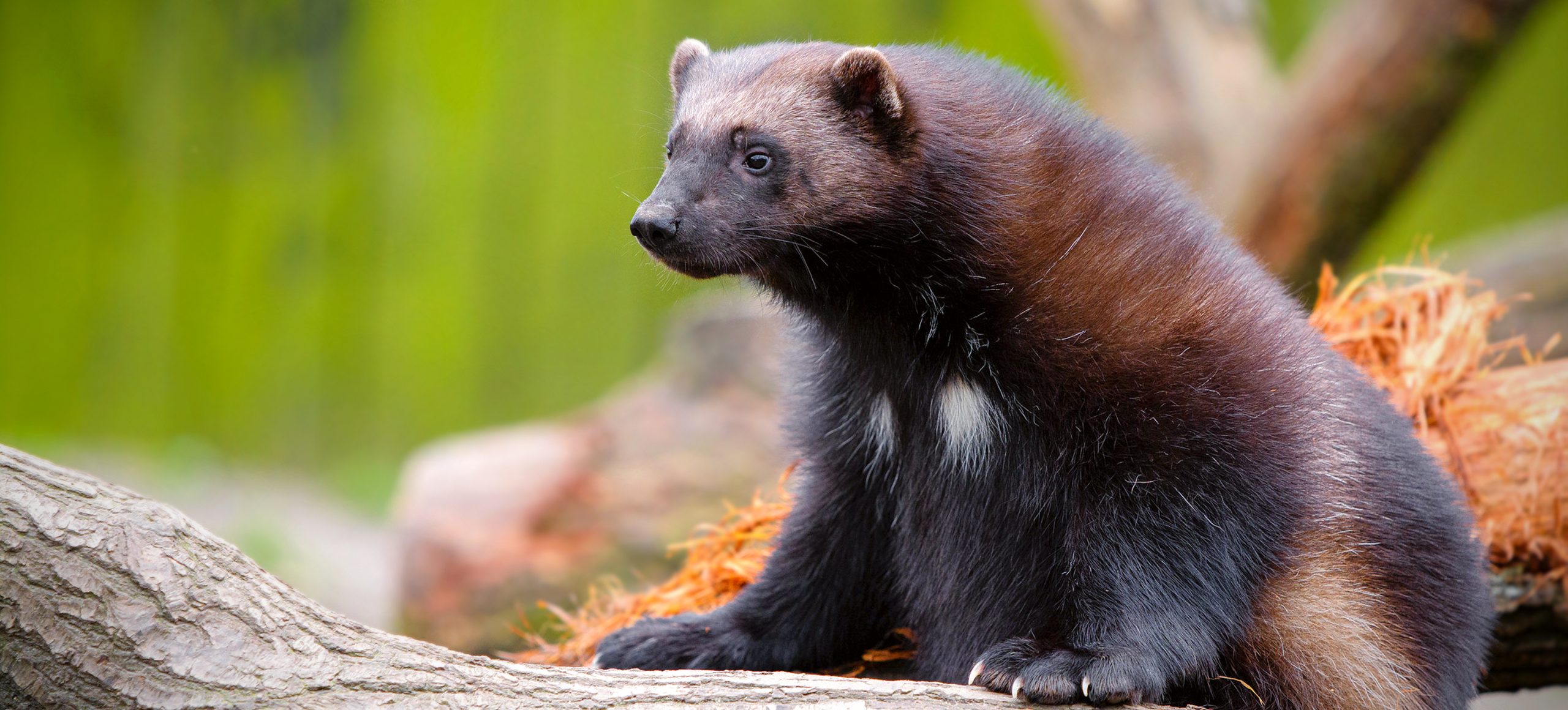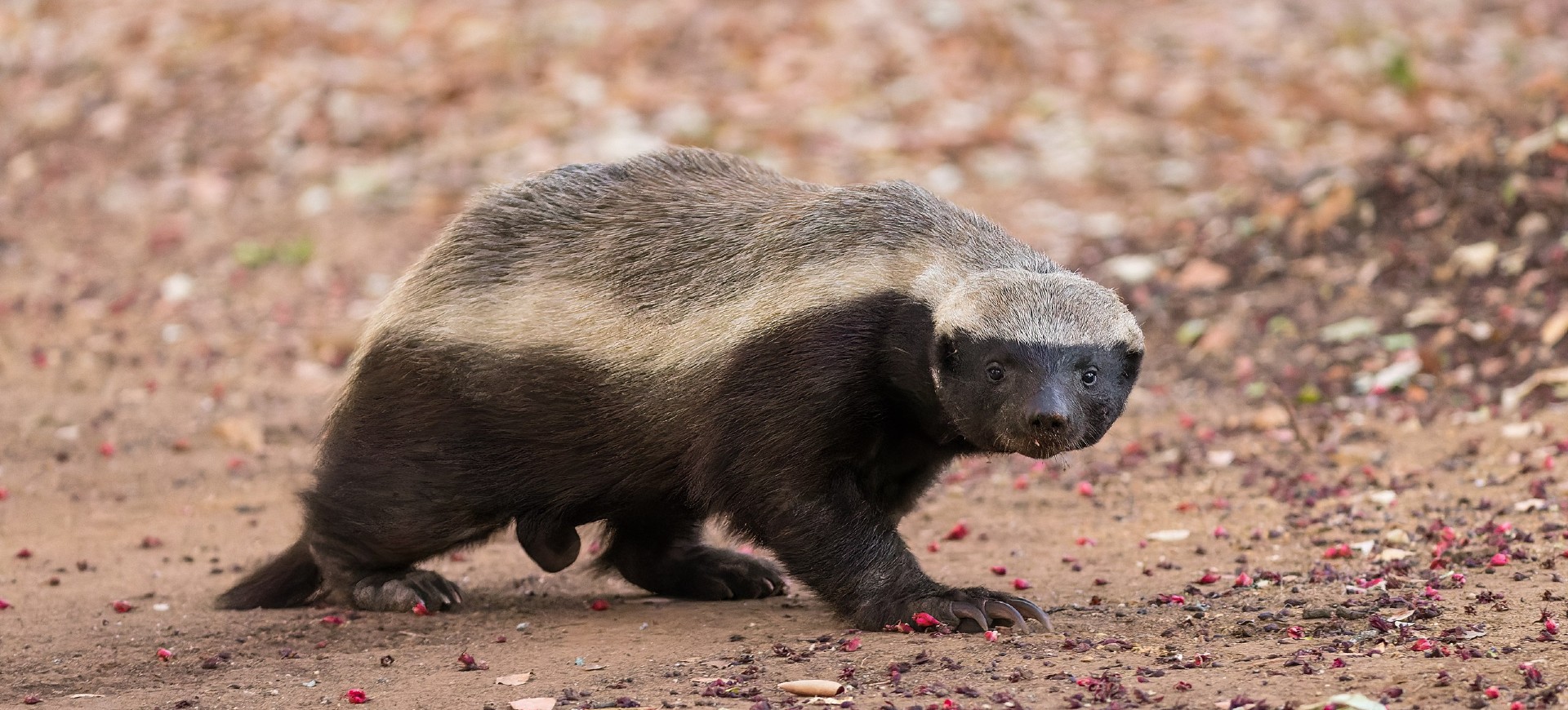Overview
The Giant Otter, native to South America, is a remarkable mammal characterized by its considerable size and anatomical features designed for aquatic living. As one of the largest members of the Mustelid family, it can grow up to 6 feet in length, making it an imposing presence in its freshwater habitats. Its body is streamlined and covered in dense, water-resistant fur, facilitating efficient movement through water.
This species is known for its highly social and playful behaviors, often in extended family groups. These group dynamics make the Giant Otter an intriguing ethological and ecological research focus. Its communication system is complex, consisting of various vocalizations to coordinate group activities or signal alarms. This combination of size, social structure, and intelligence renders it unique among otters and other Mustelids.
Primarily residing in the Amazon River basin, the Giant Otter’s habitat includes a range of freshwater environments. These consist of slow-moving rivers, tranquil lakes, and swampy marshlands. The characteristics of these habitats, such as water clarity and abundance of prey, are essential for the otter’s hunting and social activities. The animal’s physical attributes, including strong limbs and webbed feet, are perfectly suited for life in these aquatic settings. It relies heavily on these anatomical features to swim powerfully, capture prey, and navigate the intricate waterways of its native habitat.
Taxonomy
Kingdom
Phylum
Class
Order
Family
Genus
Species
Type
Physical Description:
Giant Otters are easily recognizable due to their rich dark brown fur, which has a velvety appearance. This dark coloration is offset by individualistic white markings on the throat and upper chest, often used by researchers for identification purposes. Their bodies are streamlined and elongated, designed for efficient movement in the water.
The species features a flat, muscular tail that acts like a rudder, providing precise swimming control. The legs, although short, are robust and equipped with fully webbed feet, making them formidable swimmers. Their dental anatomy includes sharp teeth and powerful jaws, crucial for catching and eating their prey.

Lifespan: Wild: ~12 Years || Captivity: ~17 Years

Weight: Male: 75-85 lbs (34-39 kg) || Female: 57-62 lbs (26-28 kg)

Length: Male: 67-72 inches (170-183 cm) || Female: 55-62 inches (140-157 cm)

Height: Male: 24-28 inches (61-71 cm) || Female: 20-24 inches (51-61 cm)

Top Speed: 17 mph (27 km/h)
Characteristic:
Native Habitat:
The Giant Otter is native to the freshwater environments of South America, most prominently in the Amazon and Orinoco River basins. These basins are characterized by slow-moving rivers, streams, and marshlands, all of which offer ideal conditions for the otter’s lifestyle. The abundant waterways provide the Giant Otter ample opportunities to hunt for prey and engage in social activities.
These animals prefer clear and shallow waters, where visibility is maximized for hunting and social interaction. They often mark areas near riverbanks, reeds, and fallen logs to establish their territories. These markings serve not only to define territory but also as social focal points where otter families congregate and interact.
Climate Zones:
Biomes:
Biogeographical Realms:
Continents:
Diet:
Diet & Feeding Habits:
Giant Otters have a primarily piscivorous diet, focusing largely on catfish and characins. These species are abundant in their natural habitats, making them the primary food source. Occasionally, the diet expands to include crustaceans and small reptiles, especially when fish are less readily available.
Hunting for the Giant Otter often takes the form of a group activity, providing them a strategic advantage. Members of the family group work in coordination to drive fish into shallower waters, making it easier to catch them. Their well-adapted bodies offer both speed and agility in the water, critical traits that enable them to successfully capture their prey.
Mating Behavior:
Mating Description:
The mating season for the Giant Otter usually falls between June and August. During this period, a monogamous pair will isolate themselves from their family group to engage in mating activities. The female then takes on the responsibility of building a den close to the water’s edge, frequently utilizing pre-existing burrows or naturally occurring holes in riverbanks.
The gestation period for the Giant Otter lasts between 65 to 70 days, culminating in the birth of a litter that can range from one to six pups. These newborns are altricial, meaning they are born in a condition requiring significant parental care and attention. Both parents are involved in the care and upbringing of the young, particularly during the vulnerable initial months of their lives.
Reproduction Season:
Birth Type:
Pregnancy Duration:
Female Name:
Male Name:
Baby Name:
Social Structure Description:
Giant Otters are social mammals that live in extended family groups, often guided by a dominant breeding pair. The size of these groups can vary widely, ranging from as few as two to as many as twenty members, although smaller groups are generally more prevalent. Within these social structures, there is a hierarchy that helps to maintain order, and the roles within the group may include hunters, caregivers, and sentinels.
Social interactions among Giant Otters are rich and include a variety of behaviors such as vocalizations, grooming, and play. These interactions serve multiple purposes, including strengthening social bonds, maintaining group cohesion, and facilitating effective communication among group members. Such social dynamics are vital for the survival and well-being of the group, especially when it comes to collective hunting and defense against predators.
Groups:
Conservation Status:
Population Trend:
The current population of Giant Otters in the wild is estimated to range from 1,000 to 5,000 individuals, which is on a downward trend. Major factors contributing to this decline include habitat destruction, most notably from logging activities and pollution of their aquatic environments. Additionally, the illegal hunting of these otters for their pelts continues to be a significant problem, exacerbating the threats to their survival.
Giant Otters are highly social creatures, often forming extended family groups that play crucial roles in their daily lives. These family structures are instrumental for successful hunting expeditions and offer a collective defense against predators. The social nature of these animals makes the loss of even a few individuals from a group detrimental to the overall well-being and survival of the entire family unit.
Population Threats:
Habitat destruction and degradation stand as the primary threats to the survival of Giant Otters. Deforestation and pollution, mostly driven by human encroachment, severely impact the quality of their natural habitats. Overfishing also poses a major challenge, as it depletes the aquatic resources the otters rely on for sustenance.
Illegal hunting for Giant Otter pelts remains a pressing issue despite legal measures to protect the species. These hunting activities reduce the population directly and disrupt the social structure of these highly social animals. Such disruptions can negatively affect the group’s ability to hunt and defend themselves, further endangering the species.
Conservation Efforts:
Various conservation measures have been enacted to protect the Giant Otter, including legal protections that outlaw hunting of the species. Additionally, protected areas have been established within their natural habitats to safeguard them from human encroachment and habitat degradation. These zones serve as sanctuaries where the otters can live, hunt, and reproduce with a lesser degree of human interference.
Educational programs have also been initiated to raise public awareness about the importance of the Giant Otter and its role in the ecosystem. These programs aim to educate communities living near otter habitats and the general public about the necessity of conserving this species. Alongside this, active monitoring and research continue to be carried out to better understand the Giant Otter’s needs and to formulate more effective conservation strategies.
Additional Resources:
Fun Facts
- Giant Otters have unique throat markings that allow individuals to be identified.
- They are known to be extremely vocal, using at least 22 different calls for communication.
- Giant Otters can close their ears and nose while underwater.
- They have the densest fur of all otters, with about 57,000 hairs per square cm.
- Unlike many otters, Giant Otters are diurnal, meaning they are active during the day.
- They are one of the few carnivores to live in extended family groups.
- The animals are known to be very territorial, defending their areas from other otter groups.
- Giant Otters are excellent swimmers and can hold their breath for up to 8 minutes.
- They use “latrine sites” for defecation, which are communal areas used by the entire group.
- In the indigenous Tupi language, their name translates to “water jaguar.”







